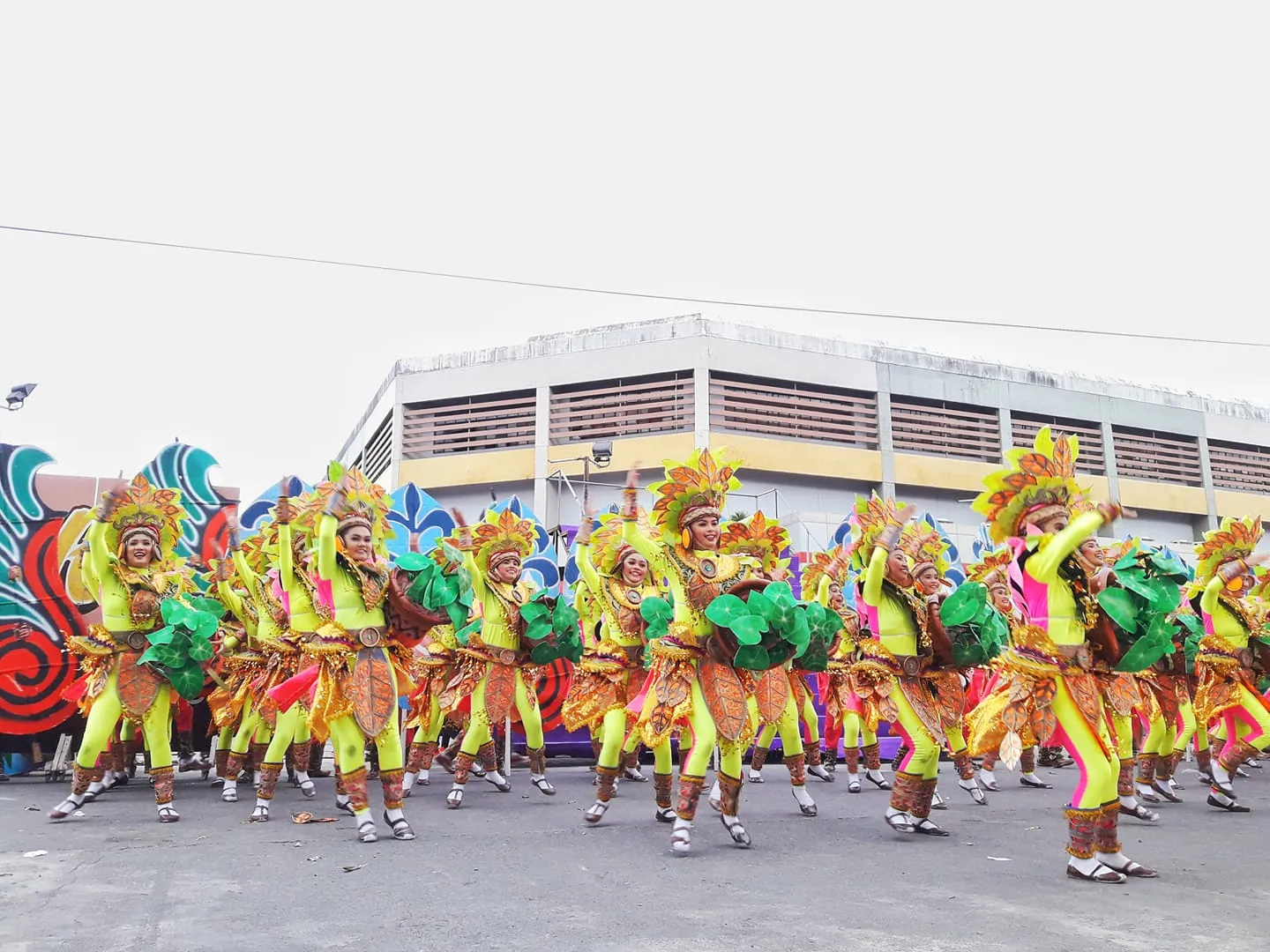
Welcome to the Ibalong Festival: A Legendary Celebration in Legazpi City
A Unique Festival Rooted in Bicolano Folklore
The Ibalong Festival is one of the most unique and vibrant cultural festivals in the Philippines. Unlike most Philippine festivals that are religious in nature, the Ibalong Festival is celebrated in Legazpi City, Albay, as a non-religious event that honors the rich folklore and mythology of the Bicol region. This makes it stand out from the many fiestas across the country that pay tribute to patron saints. Instead, the Ibalong Festival is religious or nonreligious? It is completely non-religious, focusing on the heroic and mythical tales of ancient Bicolanos rather than any religious figure or deity.
The festival takes inspiration from the Ibalong Epic, a pre-colonial folk story passed down through generations, which narrates the adventures of three legendary heroes—Baltog, Handyong, and Bantong—who fought monstrous creatures to bring peace and civilization to the land. Today, the festival brings these stories to life through colorful street dances, elaborate costumes, and theatrical performances that transport visitors back to this legendary era.
Why the Ibalong Festival is a Must-See Event
For tourists and culture enthusiasts, the Legazpi Ibalong Festival 2025 promises a spectacle like no other. The festival is a living, breathing tribute to Bicolano heritage, filled with epic-inspired street performances, grand parades, and cultural exhibitions.
If you are looking for a festival that:
✔ Showcases Philippine folklore and mythology
✔ Features jaw-dropping costumes and battle reenactments
✔ Blends adventure, history, and cultural pride
✔ Offers a chance to experience the hospitality of Legazpi City
Then, the Ibalong Festival is the perfect event for you!
Where and When is the Ibalong Festival Celebrated?
The Ibalong Festival is celebrated in Legazpi City, Albay, the bustling capital of the Bicol Region, every August. In 2025, it will once again transform the city into a mythical battleground, where heroes and monsters take center stage in dazzling performances. Whether you are a history buff, a travel enthusiast, or simply someone looking for an unforgettable experience, the Ibalong Festival in Legazpi City is an event that should not be missed.
Join the Adventure!
As the Legazpi Ibalong Festival 2025 approaches, now is the perfect time to start planning your trip! Stay tuned for the full festival schedule, event highlights, and travel tips to make the most of this legendary celebration.
Table of Contents
What is the Ibalong Festival? History & Cultural Significance
Understanding the Ibalong Festival
What is the Ibalong Festival? It is a non-religious festival celebrated annually in Legazpi City, Albay, to honor the legendary Ibalong Epic, one of the oldest recorded folk epics in the Philippines. Unlike other Philippine festivals dedicated to saints or harvests, the Ibalong Festival is unique because it is rooted in pre-colonial Bicolano history, mythology, and heroism.
With a vibrant mix of street parades, theatrical performances, and artistic displays, the festival serves as a cultural tribute to the bravery and resilience of Bicolanos, showcasing their rich folklore and identity.
Ibalong Festival Place of Origin: Legazpi City, Albay
The Ibalong Festival place of origin is Legazpi City, Albay, in the Bicol Region of the Philippines. Legazpi, known for its majestic Mayon Volcano, is the perfect backdrop for this grand event, as it embodies both Bicolano heritage and natural beauty.
The city launched the first Ibalong Festival in 1992, inspired by the need to preserve and celebrate Bicolano folklore. Since then, it has grown into one of the most anticipated cultural festivals in the country, attracting both locals and international visitors.
The Ibalong Festival Story: A Tale of Heroes and Monsters
The Ibalong Festival story is based on the Ibalong Epic, a legendary tale that recounts the adventures of three mighty warriors who defended the ancient land of Ibalong (the early name for Bicol). These heroes fought monstrous creatures and established peace and civilization.
The epic was originally passed down through oral tradition and was later recorded by Spanish friars in the 19th century. It remains an important part of Bicolano cultural background, symbolizing bravery, resilience, and the fight against adversity.
The Ibalong Festival Characters
The festival showcases legendary Ibalong Festival characters, bringing them to life through grand street performances and theatrical re-enactments.
- Baltog – The first hero to arrive in Ibalong. He defeated the giant wild boar (Tandayag) that was destroying the land.
- Handyong – A fearless warrior who fought several monsters, including the giant cyclops (Rabut) and a swarm of man-eating beasts.
- Bantong – The third hero, known for slaying the half-man, half-beast monster (Rabot) using intelligence rather than brute strength.
- Oryol – A serpent-like creature who initially opposed the heroes but later helped Handyong in his battles. She is often portrayed as a symbol of beauty and cunning.
During the Ibalong Festival, performers dress in elaborate warrior costumes, monster-inspired outfits, and tribal accessories to depict these characters.
Celebrating Bicolano Heroism, Mythology, and Identity
The Ibalong Festival history is deeply tied to Bicolano heroism and mythology. It is more than just a festival—it is a reminder of the region’s cultural background, emphasizing the values of courage, perseverance, and unity.
Through street performances, storytelling, and artistic expressions, the festival keeps the legend of Ibalong alive, ensuring that future generations continue to embrace their rich heritage and identity.
The Ibalong Festival cultural background is a testament to how folklore shapes community pride. By re-enacting these heroic tales, the festival serves as a living history book, reminding both locals and visitors of the strength and spirit of the Bicolano people.
A Festival That Stands the Test of Time
With its epic origins and larger-than-life performances, the Ibalong Festival continues to be one of the most fascinating cultural events in the Philippines. Whether you are a traveler, history buff, or someone who enjoys festivals filled with adventure and myth, the Ibalong Festival offers an unforgettable experience filled with history, excitement, and cultural pride.
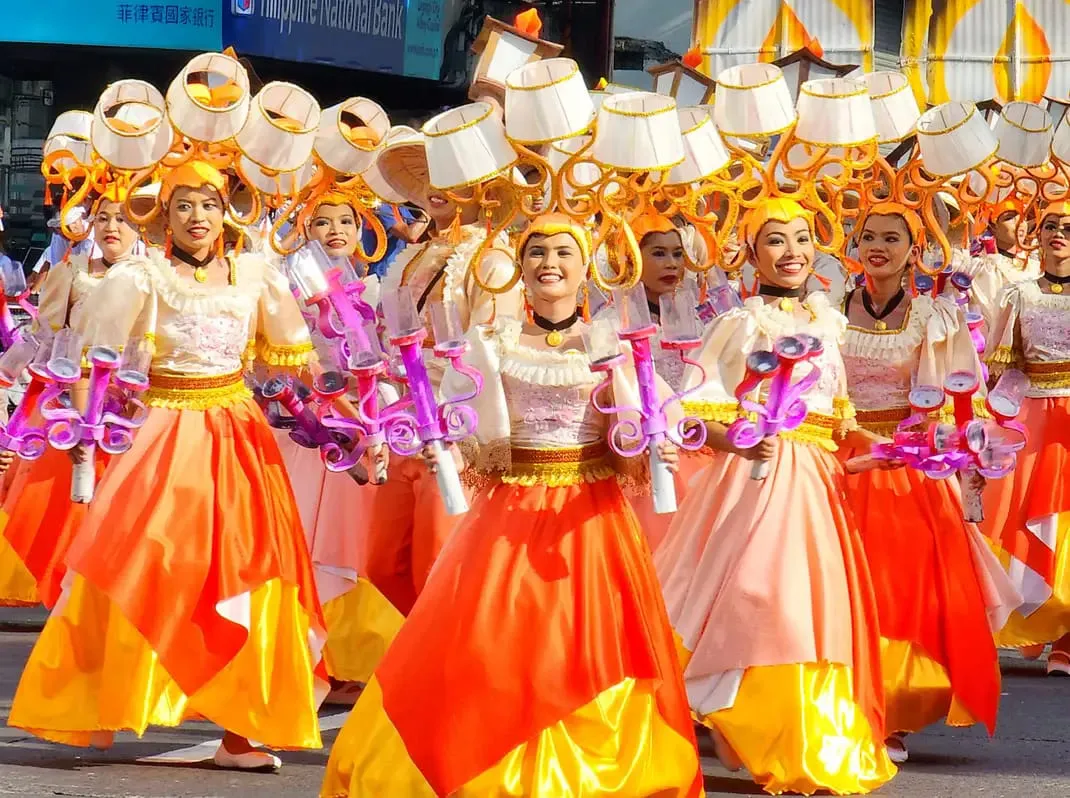
When and Where is the Ibalong Festival Celebrated?
Where is the Ibalong Festival Celebrated?
The Ibalong Festival is celebrated in Legazpi City, Albay, Philippines. This vibrant city, known for its breathtaking Mayon Volcano, is the capital of Albay province in the Bicol Region. Legazpi City serves as the perfect setting for the festival, as it is historically linked to the Ibalong Epic, the ancient folk tale that inspired the event.
Legazpi transforms into a cultural hub during the festival, with its streets filled with colorful parades, street performances, and artistic displays. Major festival activities take place in:
- Legazpi Boulevard – The main venue for street parades and cultural exhibitions.
- Peñaranda Park – A gathering place for performances, food fairs, and other events.
- Albay Astrodome – Often used for pageants, concerts, and closing ceremonies.
The festival draws thousands of visitors from across the Philippines and even from abroad, making it one of the biggest cultural celebrations in Bicol.
When is the Ibalong Festival Celebrated?
When is Ibalong Festival celebrated? The Ibalong Festival is held every August, typically in the second or third week of the month. Unlike religious festivals tied to a fixed date, the Ibalong Festival follows a flexible schedule, depending on the local government’s planning and other factors.
The festival spans one to two weeks, with the main events happening in the final days. These include the Grand Street Parade, Mutya ng Ibalong beauty pageant, sports competitions, concerts, and fireworks displays.
Ibalong Festival Date 2025: What to Expect
For those planning to visit, it is important to know the Ibalong Festival date 2025 to ensure they don’t miss the key events. The official Ibalong Festival 2025 schedule is expected to take place in August 2025, with the main highlights likely happening in the third week of the month.
While the exact dates are yet to be finalized, here’s a tentative schedule based on previous years:
- Opening Ceremony – First week of August 2025
- Ibalong Festival Street Dance Parade – Third week of August 2025
- Mutya ng Ibalong 2025 (Beauty Pageant) – Mid-August 2025
- Cultural Performances and Epic Reenactments – Throughout the festival period
- Concerts, Food Fairs, and Fireworks Display – Closing events in the final days
To get the official Ibalong Festival 2025 schedule, it is best to check Legazpi City’s tourism office updates or visit official social media pages as the festival date approaches.
Plan Your Trip for Ibalong Festival 2025
Since Ibalong Festival is celebrated in one of the most exciting cities in Bicol, booking accommodations and transportation early is highly recommended. Hotels and flights to Legazpi City fill up quickly during this time, as thousands of tourists travel to witness the one-of-a-kind cultural spectacle.
Whether you’re visiting for the epic-inspired performances, the vibrant street dances, or the delicious Bicolano cuisine, the Ibalong Festival 2025 promises an unforgettable experience that blends history, adventure, and cultural pride.
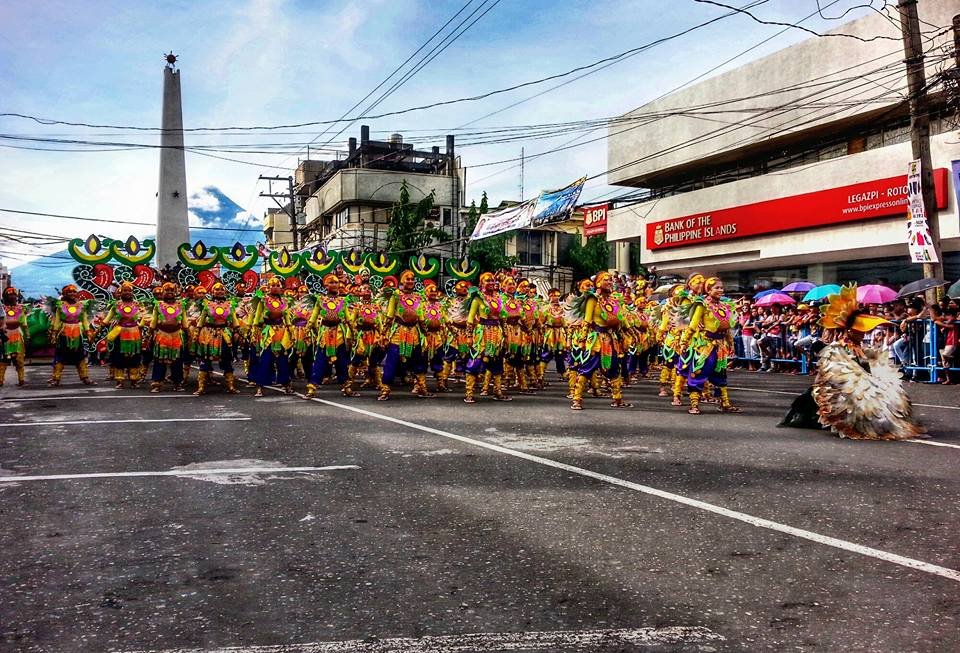
How to Get to Legazpi City for the Ibalong Festival
Planning your trip to the Legazpi Ibalong Festival 2025? Whether you’re coming from Metro Manila, Visayas, or Mindanao, getting to Legazpi City, Albay is convenient with multiple transportation options available. Here’s a detailed guide on how to get to Legazpi City for the Ibalong Festival to ensure a smooth and hassle-free journey.
By Air: The Fastest Way to Legazpi City
For travelers who prefer speed and convenience, flying to Legazpi City is the best option.
- Bicol International Airport (BIA) is the main gateway to Legazpi City, located about 15 km from the city center.
- Direct flights from Manila to Legazpi take approximately 1 hour, operated by major airlines such as Philippine Airlines, Cebu Pacific, and AirAsia.
- From Cebu to Legazpi, flights are available, but they may have layovers in Manila or Clark. It’s best to check for updated flight schedules in advance.
- From BIA to the city, tourists can take a taxi, shuttle, or private transfer to their hotels or festival venues.
Since Ibalong Festival attracts thousands of visitors, it’s recommended to book flights early to get the best prices and secure seats.
By Land: Bus Travel from Metro Manila
For budget-conscious travelers or those who prefer road trips, bus travel from Manila to Legazpi City is a great option.
- Major bus companies such as DLTB, Penafrancia Tours, Cagsawa Bus Lines, and Bicol Isarog offer daily trips from:
- Cubao Bus Terminals
- Pasay Bus Stations
- Alabang South Terminal
- The travel time by bus takes approximately 9 to 12 hours, depending on traffic and stopovers.
- Most buses offer air-conditioned and deluxe sleeper bus options for a more comfortable journey.
By Car: Self-Driving and Rental Car Options
For those who enjoy road trips, driving to Legazpi City is a scenic and flexible alternative.
- From Metro Manila, take the South Luzon Expressway (SLEX) and continue on the Maharlika Highway (AH26) towards Bicol.
- The drive takes around 9 to 10 hours, passing through Quezon Province, Camarines Norte, and Camarines Sur before reaching Albay.
- Rental cars are available in Manila and Naga, providing tourists the freedom to explore nearby attractions before heading to the festival.
By Sea: Ferry Travel from Visayas or Mindanao
For tourists coming from the Visayas or Mindanao, sea travel is another option.
- Ferries from Cebu, Leyte, and Samar arrive at Matnog Port, Sorsogon, which is about 2 to 3 hours away from Legazpi City by bus or van.
- From Matnog Port, travelers can take a bus or shuttle van heading to Legazpi City, passing through Sorsogon and Daraga.
- Some ferries also connect from Mindanao via Masbate, but these routes require multiple transfers.
Plan Your Trip Early for the Best Experience
Since Legazpi Ibalong Festival 2025 is a major event, it is highly recommended to book flights, bus tickets, or accommodations in advance. Whether traveling by air, land, or sea, making arrangements early will ensure a stress-free and enjoyable trip to Legazpi City for this exciting and legendary festival.
Top Events and Activities at the Ibalong Festival
The Ibalong Festival is an action-packed celebration filled with grand street performances, cultural showcases, sports competitions, and community events. Every year, the festival highlights Bicolano heritage, mythology, and artistic talent through a vibrant mix of dance, music, and creative expression.
If you’re planning to witness Ibalong Festival 2025, here are the must-see Ibalong Festival events and activities that make this festival an unforgettable experience.
Ibalong Festival Street Dance: A Battle of Heroes and Monsters
The Ibalong Festival street dance is the highlight of the festival, where performers re-enact the legendary battles from the Ibalong Epic. Dancers dressed in elaborate Ibalong Festival costumes and designs portray warriors, mythical creatures, and legendary figures from Bicolano folklore.
- The performances feature tribal dance routines, choreographed fight sequences, and elaborate props, bringing the epic battles to life.
- Dancers wear handcrafted masks, traditional armor, and colorful warrior outfits, making this event a visual spectacle.
- Each performance tells a different part of the Ibalong Epic, with scenes depicting heroes like Baltog, Handyong, and Bantong fighting monstrous beasts such as the giant boar Tandayag and the serpent-woman Oryol.
Grand Parade: A Showcase of Ibalong Festival Costumes and Floats
One of the most anticipated events is the Grand Parade, where Legazpi’s streets are transformed into an open-air stage.
- Participants from different schools, cultural groups, and organizations march in spectacular Ibalong Festival costumes, featuring tribal designs, elaborate warrior outfits, and giant masks representing mythical creatures.
- Creative floats inspired by ancient Bicolano mythology roll through the streets, showcasing artistic craftsmanship and storytelling.
- The parade is a riot of colors, music, and energy, with drum beats and chants filling the air as performers bring the Ibalong Festival story to life.
Mutya ng Ibalong 2025: The Search for the Festival Queen
No Filipino festival is complete without a beauty pageant, and the Mutya ng Ibalong 2025 is one of the festival’s most glamorous events.
- Contestants from different parts of Albay and the Bicol Region compete for the title of Mutya ng Ibalong, showcasing their beauty, intelligence, and advocacy for cultural preservation.
- The event features stunning traditional and modern evening wear, as well as an interview segment where candidates share their insights on Bicolano heritage and tourism.
- The crowned Mutya ng Ibalong 2025 becomes an ambassador of Bicolano culture and tourism, representing the festival in various promotional events.
Ibalong Festival Street Performance 2025: Theatrical and Musical Acts
The Ibalong Festival street performance 2025 brings together dance, music, and storytelling, offering festival-goers a live, open-air theater experience.
- Local theater groups, school performers, and cultural organizations put on dramatic reenactments of the Ibalong Epic, showcasing Bicol’s rich storytelling tradition.
- Musical acts and drum performances add a rhythmic energy to the streets, blending traditional beats with modern festival vibes.
- These performances take place at various locations around Legazpi City, allowing audiences to experience the epic tales of Ibalong from different creative perspectives.
Sports Competitions and Adventure Challenges
As a city known for adventure tourism, Legazpi Ibalong Festival 2025 includes exciting sports events and outdoor challenges for both locals and visitors.
- Dragon Boat Race – Teams from different regions compete in a thrilling boat race across Albay Gulf, showcasing teamwork and athleticism.
- Triathlon and Fun Run – Athletes and fitness enthusiasts participate in endurance races, running past picturesque landscapes with Mayon Volcano as a backdrop.
- Traditional Filipino Games – Classic street games like “karera” (sack race) and “patintero” are included to engage festival-goers of all ages.
Cultural Exhibitions and Bicolano Artistry
For those interested in Bicolano culture and history, the Ibalong Festival events lineup includes several exhibitions, trade fairs, and art displays that highlight the craftsmanship and creativity of the region.
- Local Artisan Markets – Featuring handmade crafts, woven textiles, and souvenirs made by Bicolano artisans.
- Photo and Art Exhibits – Showcasing works from local photographers and painters, depicting scenes from the Ibalong Epic and the festival’s history.
- Food Fairs – Offering a taste of authentic Bicolano cuisine, including Bicol Express, Laing, and Pili Nut delicacies.
Concerts, Fireworks, and Night Parties
As the sun sets over Legazpi City, the Ibalong Festival transforms into a lively night festival filled with music, lights, and celebrations.
- Live Concerts – Featuring local and national artists, with performances that bring together traditional Bicolano music and modern festival beats.
- Fireworks Display – A spectacular pyrotechnic show lights up the sky, marking the grand finale of the festival.
- Street Parties and Rave Nights – Festival-goers dance the night away in open-air concerts, neon-lit parties, and DJ performances.
Experience the Magic of the Ibalong Festival
The Ibalong Festival 2025 is more than just an event—it’s a journey into history, legend, and cultural pride. Whether you are drawn to the spectacular Ibalong Festival street dance, the creative Ibalong Festival costume designs, or the exciting lineup of events, this one-of-a-kind festival promises a memorable and immersive experience for all.
Plan your trip, mark your calendars, and get ready to be part of the legend at Legazpi Ibalong Festival 2025.

What to Eat: Must-Try Bicolano Dishes During the Ibalong Festival
The Ibalong Festival is not just about epic battles and cultural performances—it’s also a gastronomic adventure that lets visitors indulge in authentic Bicolano cuisine. From spicy coconut-infused dishes to delicious native delicacies, Legazpi City offers a flavor-packed experience for every food lover.
If you’re wondering where to eat in Legazpi City during Ibalong Festival, here are the must-try dishes and the best places to enjoy them.
Bicol Express: The Ultimate Spicy Delight
One of the most famous Bicolano dishes, Bicol Express is a flavorful combination of pork, coconut milk, chili peppers, garlic, and shrimp paste.
- Known for its creamy yet spicy taste, this dish is a perfect representation of Bicolano cuisine’s bold flavors.
- Best paired with steamed rice, it is a favorite among both locals and tourists.
- Available at restaurants, carinderias (local eateries), and food stalls during the festival.
Where to Try It:
- Small Talk Café – A must-visit spot in Legazpi offering an innovative Pasta Bicol Express.
- 1st Colonial Grill – Famous for its authentic Bicol Express and other regional specialties.
Laing: A Bicolano Classic
Laing is a savory dish made from dried taro leaves, coconut milk, chili, and shrimp paste. Despite its simple ingredients, it delivers a rich, creamy, and slightly spicy taste that makes it a crowd favorite.
- It is often served as a side dish or main course, perfect for those who love coconut-based flavors.
- Some versions include dried fish or pork, adding a smoky depth to the dish.
Where to Try It:
- Gerry’s Grill Legazpi – Offers a deliciously creamy version of Laing.
- Balay Cena Una – A heritage restaurant that serves a traditional take on Laing.
Pinangat: A Delicate Bicolano Specialty
Often confused with Laing, Pinangat is another Bicolano delicacy made of taro leaves, coconut milk, and seafood or pork, wrapped in banana leaves and steamed.
- The slow cooking process allows the coconut milk and spices to fully infuse the dish, giving it a rich, layered taste.
- It is milder than Laing but still retains a slight spicy kick, making it ideal for those who prefer a balanced flavor.
Where to Try It:
- Let’s Pinangat in Camalig – Just a short drive from Legazpi, this restaurant is famous for its authentic Pinangat.
- Sibid-Sibid Food Park – A casual eatery serving freshly made Pinangat with grilled seafood.
Pili Nut Delicacies: Perfect Souvenirs from Legazpi
Bicol is world-famous for its Pili nuts, known for their buttery texture and rich flavor. These nuts are turned into various sweet and savory treats that make perfect souvenirs.
- Pili Nut Tarts – A crunchy, caramelized snack similar to pecan pie.
- Pili Nut Mazapan – A soft, chewy delicacy made from ground Pili nuts and honey.
- Sugar-Coated Pili Nuts – A sweet and crunchy snack, ideal for pasalubong (gifts).
Where to Buy It:
- Albay Pili Nut Factory – The best place to buy high-quality Pili nut products.
- Legazpi Public Market – A great spot for affordable Pili nut treats and other local delicacies.
Where to Eat in Legazpi City During Ibalong Festival
During the Ibalong Festival, food stalls and pop-up markets offer authentic Bicolano dishes at affordable prices. If you prefer a sit-down meal, here are the best restaurants in Legazpi City:
- 1st Colonial Grill – Famous for Bicol Express and Sili Ice Cream (a must-try spicy dessert).
- Balay Cena Una – A heritage restaurant with a focus on traditional Bicolano flavors.
- Sibid-Sibid Food Park – Best for grilled seafood and Laing.
- Small Talk Café – A cozy café known for modern Bicolano fusion dishes.
Savor the Flavors of Bicol During the Ibalong Festival
The Ibalong Festival is not just a celebration of history and mythology, but also a feast for the senses. Whether you’re a spice lover, a dessert enthusiast, or someone looking for unique Filipino dishes, Legazpi City has something special for you.
Make sure to explore the best Bicolano dishes, visit the top food spots, and bring home some Pili nut delicacies to complete your Ibalong Festival 2025 experience.
Where to Stay: Best Accommodations in Legazpi City for Ibalong Festival 2025
Finding the perfect place to stay during the Legazpi Ibalong Festival 2025 is essential for a comfortable and enjoyable experience. Since thousands of visitors flock to Legazpi City for this annual event, hotels and accommodations fill up quickly. Whether you’re looking for a luxurious stay with stunning views, a mid-range hotel with convenient access, or a budget-friendly option, there’s a place for every traveler.
Here’s a guide to the best hotels in Legazpi City for Ibalong Festival 2025, categorized based on your budget and preferences.
Luxury Hotels: Comfort and Scenic Views
For those seeking top-tier comfort, breathtaking views of Mayon Volcano, and world-class amenities, these luxury hotels offer the best accommodations in Legazpi City.
- The Oriental Legazpi – Known as the premier luxury hotel in Legazpi, The Oriental offers panoramic views of Mayon Volcano, an infinity pool, spacious rooms, and fine dining options. Its prime location makes it ideal for festival-goers who want to experience both the excitement of Ibalong and the serenity of a high-end retreat.
- Misibis Bay Resort – While technically outside the city, this private island resort in Cagraray Island is a great option for those wanting to combine the festival with a beach getaway. It offers water activities, luxury villas, and private tours.
Mid-Range Hotels: Comfort at an Affordable Price
If you’re looking for a comfortable stay without breaking the bank, these mid-range hotels offer great amenities and convenient locations.
- Lotus Blu Hotel – A modern hotel located in the heart of Legazpi City, known for its spacious rooms, business-friendly amenities, and close proximity to shopping malls and restaurants. It’s a great mid-range option for travelers who want comfort and accessibility.
- Hotel St. Ellis – A stylish and cozy hotel offering affordable luxury with an in-house spa, a restaurant serving local and international cuisine, and comfortable rooms. It is centrally located, making it easy to access Ibalong Festival events.
- Casablanca Suites – A boutique hotel offering personalized service, modern interiors, and a relaxed atmosphere. It’s perfect for travelers who want a mix of comfort and affordability.
Budget-Friendly Hostels and Airbnb Stays
For budget travelers, backpackers, and festival-goers looking for an affordable yet comfortable stay, these hostels and Airbnb options offer great value for money.
- Mayon Backpackers Hostel – One of the best options for budget-conscious travelers, this friendly and social hostel provides dorm-style rooms and private options at an affordable rate.
- Your Brother’s House Tribal Village – A unique and rustic stay for those who want an eco-friendly experience, offering nipa huts and cottages surrounded by nature.
Booking Tips for Ibalong Festival 2025
Since the Legazpi Ibalong Festival 2025 is a major event, accommodations can get fully booked months in advance. To ensure you get the best deals:
- Book Early – Reserve your hotel or Airbnb at least 3-6 months before the festival to secure the best rates.
- Stay Near the Festival Venues – Opt for accommodations close to Legazpi Boulevard, Peñaranda Park, or the city center to be near the action.
- Consider Alternative Stays – If hotels are fully booked, try Airbnb, guesthouses, or nearby accommodations in Daraga or Camalig.
Find Your Perfect Stay in Legazpi for Ibalong Festival 2025
With a variety of accommodations available, Legazpi City offers something for every traveler’s budget and preference. Whether you want a luxurious escape, a budget-friendly stay, or a cultural experience, make sure to book early and secure your ideal spot for the Ibalong Festival 2025.
Tips for First-Time Visitors to the Ibalong Festival
Attending the Ibalong Festival for the first time? This epic celebration in Legazpi City is one of the most vibrant and culturally rich festivals in the Philippines. To make the most of your experience, it’s important to be prepared, plan ahead, and know what to expect. Here are some essential tips for first-time visitors to ensure a smooth and enjoyable festival experience.
Best Places to Watch the Parade
The Ibalong Festival street parade is one of the biggest highlights of the festival, featuring elaborate costumes, street performances, and cultural exhibitions. To get the best viewing experience, consider these spots:
- Legazpi Boulevard – This is the main parade route where you’ll get an unobstructed view of the street dancers, floats, and performers. Arrive early to secure a front-row spot.
- Peñaranda Park – A great location to watch the main performances and cultural reenactments, as many of the festival’s major events are staged here.
- Near the Albay Capitol Grounds – This area usually offers a less crowded spot, perfect for those who want to watch comfortably without the overwhelming crowd.
Pro Tip: Arrive at least an hour before the parade starts to find a good viewing spot. If you prefer a seated area, some restaurants and cafés along the parade route offer reserved seating with a view.
What to Wear: Stay Comfortable and Festival-Ready
Since the Ibalong Festival is an outdoor event with plenty of walking, standing, and dancing, wearing the right clothing is key to staying comfortable and stylish.
- Light, breathable clothing – August in Legazpi can be hot and humid, so opt for cotton shirts, tank tops, or lightweight fabrics.
- Comfortable shoes – Expect to walk a lot, so wear sneakers, sandals, or flats instead of heels.
- Hat and sunglasses – Protect yourself from the sun while watching the parade.
- Bring an umbrella – The weather in August can be unpredictable, with sudden rain showers. A foldable umbrella or raincoat will keep you dry.
Pro Tip: Many festival-goers dress in Bicolano-inspired outfits or wear colorful accessories to match the festive vibe—don’t be afraid to join in!
Cash or Card? Payment Tips for Festival-Goers
During the festival, you’ll be shopping for souvenirs, trying out local food, and possibly booking tours. Knowing the best payment methods will help avoid inconveniences.
- Bring cash – Many food stalls, street vendors, and small souvenir shops only accept cash payments. Having small bills (₱20, ₱50, ₱100) is helpful.
- ATMs are available, but expect long lines – If you need to withdraw cash, ATMs can be found at banks and shopping malls, but during the festival, expect them to be crowded.
- Credit and debit cards – Some hotels, restaurants, and malls accept card payments, but not all establishments have card terminals. It’s best to carry a mix of cash and cards.
Pro Tip: If you plan to buy a lot of souvenirs or food, set a budget and withdraw cash before the festival to avoid ATM shortages.
Weather Conditions in August: Be Prepared
The Ibalong Festival happens in August, a month that can bring both sunny days and occasional rain showers. Here’s what to expect:
- Hot and humid days – Temperatures can range from 27°C to 33°C (81°F to 91°F), so it’s important to stay hydrated and wear sunscreen.
- Afternoon rain showers – Sudden rain is common, so bring a compact umbrella or a poncho just in case.
- Cool evenings – Nights can be cooler, so bringing a light jacket or scarf might be useful if you plan to stay out late for concerts or night events.
Pro Tip: Keep a small travel bag with a water bottle, extra shirt, portable fan, and sunscreen to stay comfortable throughout the day.
Festival Etiquette: Respect Local Traditions and Stay Safe
The Ibalong Festival is not just a fun celebration—it is a tribute to Bicolano history and culture. As a visitor, being respectful and mindful of traditions will help ensure that everyone enjoys the festivities.
- Respect the performers – Avoid disrupting performances, blocking parade routes, or interfering with dancers.
- Follow crowd control rules – Security personnel and marshals manage crowd flow for safety. Cooperate with them and avoid pushing or rushing into restricted areas.
- Dispose of trash properly – Keep Legazpi City clean by using designated trash bins and following local waste disposal rules.
- Be mindful of pickpockets – Large crowds attract petty theft, so keep your belongings secure, avoid displaying valuables, and use a crossbody bag or anti-theft backpack.
- Respect local customs and people – Bicolanos are known for their hospitality, so always be polite and friendly to locals, vendors, and fellow tourists.
Pro Tip: If you get lost or need assistance, Legazpi City’s tourism offices and festival volunteers are available to help. Look for designated information booths for directions and event schedules.
Enjoy the Ibalong Festival Like a Pro
The Ibalong Festival is an experience like no other, filled with cultural performances, exciting street parades, and a warm, welcoming atmosphere. By following these essential tips, you’ll be well-prepared to make the most of your first Ibalong Festival experience.
Plan ahead, dress comfortably, bring cash, and respect local traditions—and you’ll be ready to fully enjoy the vibrant energy of Legazpi City’s most legendary celebration.
Why You Should Experience the Ibalong Festival
The Ibalong Festival is more than just a celebration—it is a living tribute to Bicolano history, culture, and resilience. Unlike many other Philippine festivals that are tied to religious traditions, the Ibalong Festival is religious or nonreligious? It is completely nonreligious, making it one of the few festivals in the country that highlight pre-colonial Filipino culture rather than Catholic influences.
From mythical warriors and battle reenactments to colorful street performances and grand parades, this festival offers a unique experience that immerses visitors in the rich folklore of Bicol.
A Festival Unlike Any Other
The Ibalong Festival cultural background is deeply rooted in the ancient Ibalong Epic, an early Filipino legend that tells the story of heroic warriors, mythical creatures, and the early civilization of Bicol.
- Unlike other Philippine festivals that honor saints or religious figures, the Ibalong Festival celebrates Bicolano mythology, bringing to life legendary characters such as Baltog, Handyong, Bantong, and Oryol.
- This makes the Ibalong Festival unique, as it highlights indigenous Filipino culture, pre-colonial traditions, and storytelling through dance and theatrical performances.
Is Ibalong Festival Religious? No, It’s a Celebration of History and Culture
Many Philippine festivals, such as Sinulog and Ati-Atihan, are held in honor of Catholic patron saints. However, Ibalong Festival is nonreligious, focusing instead on the heroic feats of Bicolano ancestors.
- It tells the story of ancient Bicolanos fighting mythical creatures, rather than a biblical or religious narrative.
- It reflects the resilience, bravery, and unity of the Bicolano people, showing how their identity was shaped even before the arrival of Spanish colonizers.
- It serves as a reminder of the region’s pre-colonial history, ensuring that future generations recognize and appreciate their indigenous roots.
Why Tourists Should Add Ibalong Festival to Their Bucket List
If you’re looking for a festival that goes beyond religious traditions and offers a mix of history, culture, adventure, and entertainment, then the Ibalong Festival is a must-visit.
Here’s why it should be on every traveler’s bucket list:
- Unique Cultural Experience – Witness one of the only epic-based festivals in the Philippines, where history and storytelling come alive.
- Exciting Street Performances – Experience theatrical reenactments, warrior dances, and battle scenes, making it feel like stepping into an ancient legend.
- Stunning Costumes and Parade – See vibrant Ibalong Festival costumes that showcase Bicolano artistry and tradition.
- A Celebration of Bicolano Heritage – Get to know the Ibalong Festival cultural background and discover how pre-colonial Filipinos lived and thrived.
- Perfect for History and Mythology Enthusiasts – If you love stories of heroes, monsters, and legendary adventures, this festival is like watching a live-action epic unfold before your eyes.
Don’t Just Hear About It—Experience It!
The Ibalong Festival is a celebration like no other. Whether you’re a history buff, a cultural traveler, or someone looking for a festival filled with energy and excitement, this event promises an unforgettable journey into the past.
Plan your trip to Legazpi City for Ibalong Festival 2025 and immerse yourself in an epic tale brought to life through dance, music, and tradition.
Plan Your Trip to the Ibalong Festival 2025 Now!
The Ibalong Festival 2025 is shaping up to be one of the most exciting cultural celebrations in the Philippines. With epic street performances, colorful parades, thrilling sports events, and rich Bicolano traditions, this festival offers an unforgettable experience for both locals and international visitors. If you want to be part of this legendary celebration, now is the perfect time to start planning your trip!
Book Your Flights and Accommodations Early
Since the Ibalong Festival 2025 schedule falls in August, flights and hotels in Legazpi City tend to get fully booked months in advance. To secure the best rates and ideal accommodations, consider these tips:
- Book Flights Early – Check airlines like Philippine Airlines, Cebu Pacific, and AirAsia for direct flights to Bicol International Airport (BIA).
- Reserve Your Hotel – Choose from luxury stays, mid-range hotels, or budget-friendly Airbnbs close to the festival venues.
- Consider Alternative Stays – If hotels are fully booked, check for guesthouses, hostels, or nearby accommodations in Daraga and Camalig.
Stay Updated on the Ibalong Festival 2025 Schedule
To get the latest updates on the festival dates, events, and activities, follow the official Ibalong Festival social media pages and Legazpi City’s tourism office announcements. Keeping track of the schedule will help you plan which events to attend and where to be during the main festival highlights.
Share the Experience with Friends and Fellow Travelers
The Ibalong Festival is best enjoyed with friends, family, or fellow travelers. If you’re excited about this epic celebration, spread the word and invite others to join you on this cultural adventure.
- Share this festival guide with your travel group.
- Plan an itinerary to explore not just the festival but also Legazpi’s famous attractions, including Mayon Volcano, Cagsawa Ruins, and the city’s delicious food spots.
- Connect with fellow festival-goers through social media groups and forums for travel tips and recommendations.
Don’t Miss the Ibalong Festival 2025!
The Ibalong Festival is more than just a cultural event—it’s a one-of-a-kind journey into history, legend, and vibrant Filipino traditions. Whether you’re a first-time visitor or a returning festival enthusiast, this is your chance to witness one of the most spectacular celebrations in the country.
Start planning now, book your trip, and get ready to experience the magic of the Ibalong Festival 2025!

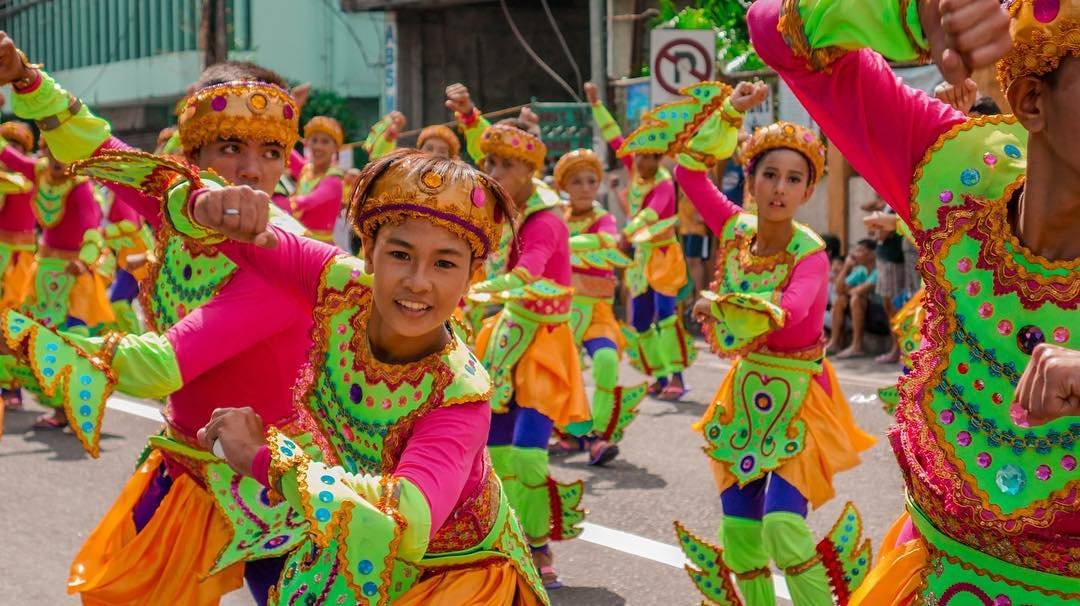
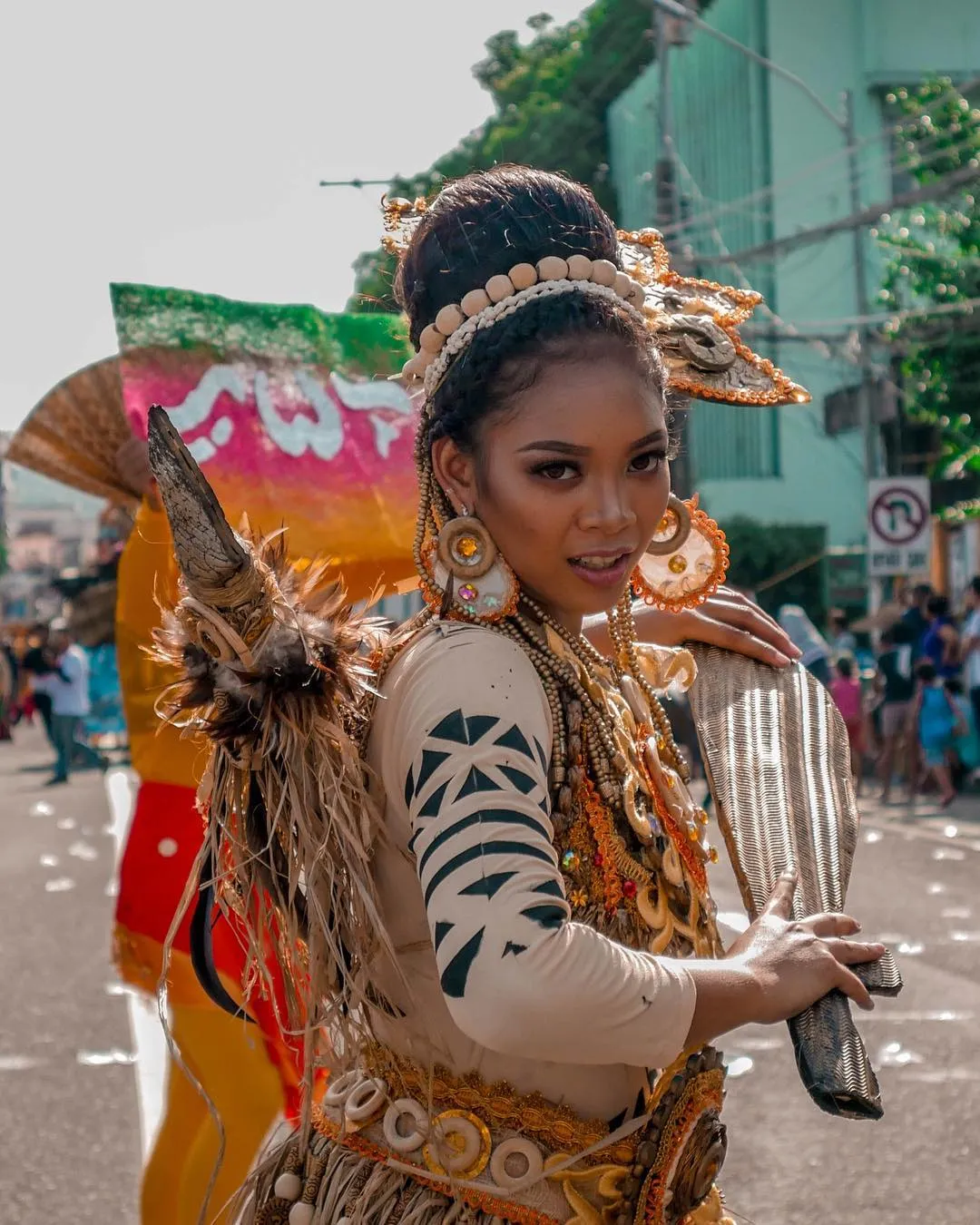

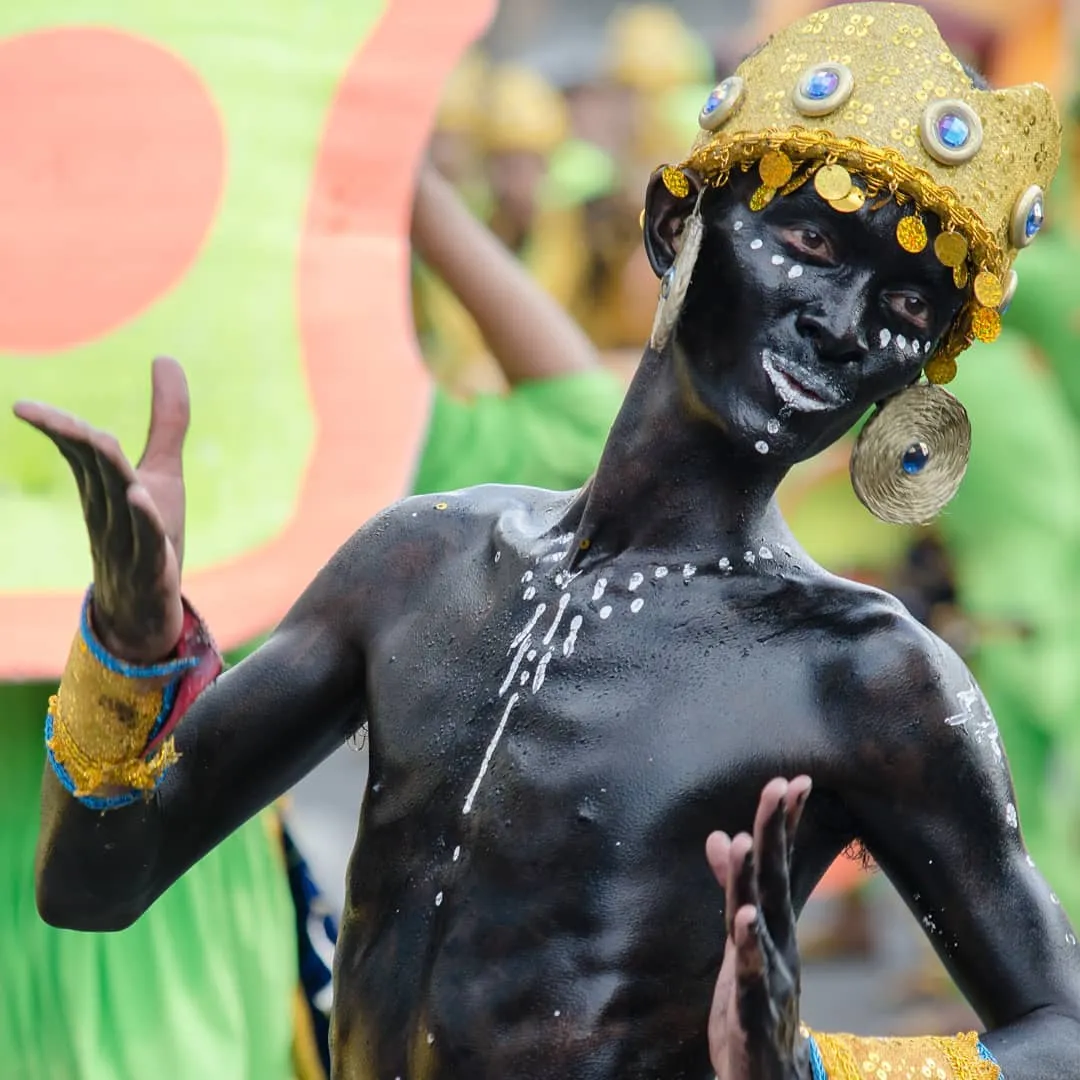
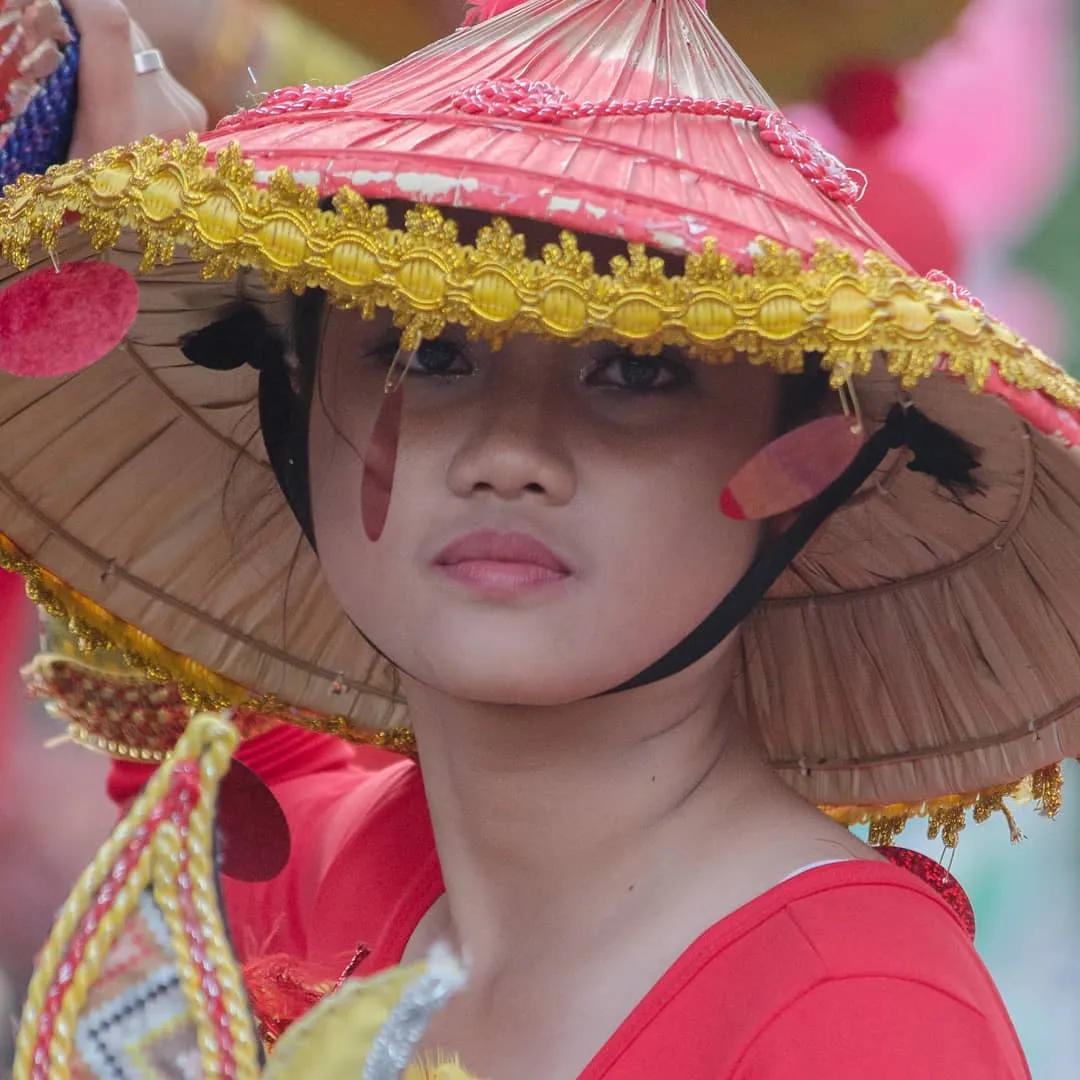
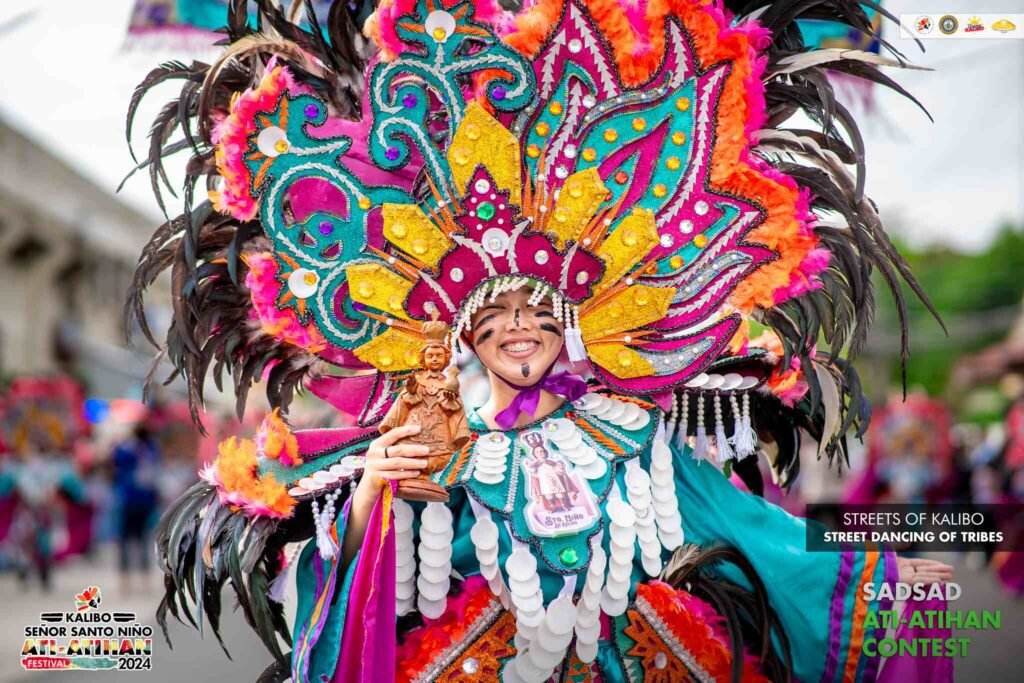

Can you be more specific about the content of your article? After reading it, I still have some doubts. Hope you can help me.